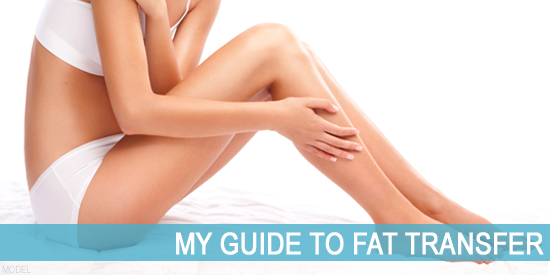Using a patient’s own fat for cosmetic procedures isn’t a new idea — I’ve been using fat transfer techniques in Chicago for 25 years — but its popularity has noticeably increased during the past few years. Fat transfer, also called fat grafting, has long been a staple of facial rejuvenation, but it is now becoming more common for cosmetic and reconstructive breast surgery.
As more people become interested in fat transfer, it’s helpful to understand the opportunities it presents, as well as its limitations. Below is a guide designed to help patients who are considering a fat transfer procedure. I’ll draw distinctions between evidence-based uses of fat grafting and procedures that are really more about marketing than science.
General Guidelines
- The success of fat transfer procedures depends on the technique and experience of the plastic surgeon. Be sure to carefully select a surgeon who is not only board-certified, but who is familiar with fat transfer treatments.
- Fat transfer includes 3 steps: Harvesting fat using liposuction, processing the fat to purify it, and inserting the fat where desired for cosmetic purposes.
- Fat can be taken from any area of the body. For thin patients, I may take a small amount of fat from several areas, such as the abdomen, thighs, and buttocks.
- Liposuction is performed by first injecting the area with a local anesthetic, then using micro-cannulas — very fine tubes — to remove the fat with suction.
- I purify the fat using a simple decanting technique and special absorbent material that gently removes damaged fat cells without harming the healthy cells.
- Harvested fat can be frozen and stored to use in future treatments.
Facial Fat Grafting
- Using autologous fat (meaning a patient’s own fat) as a cosmetic filler for facial rejuvenation is preferable, in my opinion, to using commercially manufactured dermal fillers. Fat is natural, can be used in greater volume, and comes with longer-lasting results.
- With fat grafting alone, most patients need 3 to 4 treatments during a 6-month period to get the desired results. I also add fat grafting to many facelift surgeries.
- As an international leader in the area of fat transfer, I’ve been involved with research into anti-aging products enriched with blood platelets and stem cells. Some procedures, such as “Vampire Facelifts” or “Stem-Cell Facelifts” use those techniques as advertising fodder, but at this point the evidence doesn’t support the marketing of these treatments.
Breast Surgery Fat Grafting
- Fat transfer can supplement breast augmentation with breast implants to enhance the results. I use autologous fat to give the transition from the implant to the chest wall a more natural look in a thin patient, to enhance cleavage by making the breasts appear closer together, and to provide more fullness in the lower portion of the breasts for patients getting breast lifts with implants.
- Breast lift patients who do not want implants benefit from fat grafting as a method to enhance the upper half of the breast.
- Some surgeons perform breast augmentation using fat grafting alone and no implants, which is an interesting approach, but I believe the procedure is simply too limited at this time to create adequate results.
If you’re interested in fat grafting, the gist is that when performed by an experienced surgeon, it is a very useful technique for facial rejuvenation and breast enhancement, but it’s important to recognize both its capabilities and its limitations.



Leave a Reply